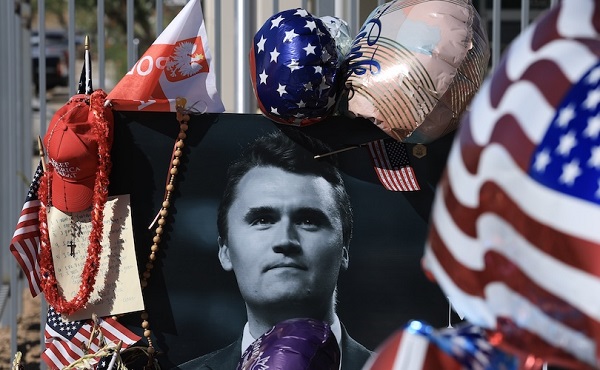Frontier Centre for Public Policy
“Forty-two Ways the Press Hates You” – The CBC Chapter
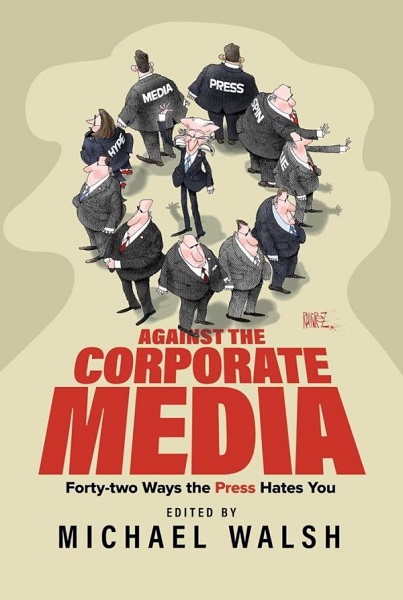
From the Frontier Centre for Public Policy
Excerpt from the book: Against the Corporate Media _ Forty-two Ways the Press Hates You (2024) – Michael Walsh ; chapter written by Elizabeth Nickson.
The Beast
Renegade governmental organizations are virtually impossible to rein in, especially if they have careened off the rails into destructive action. Take, for the sake of argument, the FBI or Environmental Protection Agency in the U.S., the World Health Organization and the United Nations internationally, or the plethora of sovereign and sub-sovereign health ministries that went AWOL during COVID-19. If threatened, a throng of defenders rises, vocal to the point of shrill, defending the original idea, refusing to look at the slavering beast that public money hath wrought.
“Reform or die,” says prime minister after president after premier. Nodding subservience is followed by…nothing.
Commissions are formed, recommendations are made. Cosmetic changes ensue. Like rogue elephants, they continue to roam the heights of the culture, braying and stomping and breaking things. Power, once acquired, needs to be wrenched from bleeding hands.
In Canada, that raging elephant is the Canadian Broadcasting Corporation. Founded in 1936, at last count, the CBC sprawls across the country in twenty seven over-the-air TV stations, eighty-eight radio stations, a flotilla of websites, podcasts, streaming TV, and multiple satellite radio stations. Its mandate is high-flown, to connect the multiple city-states of the country, its frozen north and isolated rural communities via dozens of offices big and small. It broadcasts in English, French, and eight indigenous languages.
The CBC’s Toronto headquarters, finished in 1993, was a statement of extreme optimism at a time when the corporation was widely loved. Designed by Philip Johnson, it cost $381 million. It is de-constructivist in form, a symbol of the CBC’s purpose, which is to re-conceive Canada’s founding as racist and the country in need of radical reform led by itself. Its orthogonal grid is “interrupted by skewed elements,” and its interior dominated by a green elevator shaft set at an angle to the building grid. Outside, a forbidding Soviet box, windows are outlined in CBC red. Inside, it’s confusing, echoing, and replete with empty studios. Despite effulgent funding, the aura of failure wears on those still employed. They don’t understand why they are no longer astride the culture.
A behemoth, it demands $1.24 billion of direct subsidy from the government every year and rakes in several hundred million more through licensing, advertising, and production subsidy. It eats up, say some analysts, half the media dollars spent in the country, yet is watched on its 27 TV stations by fewer than five percent of Canadians. Its news outlets perform worse. Only 1.75 percent of Canadian watch CBC news on broadcast channels or cable. The National, its star suppertime news show in Toronto, is watched by fewer than half a million people, while private-sector competitors in the same city crest at one million or even million.
In June 2023, the editorial board of Canada’s long-time national newspaper, The Globe and Mail, put its rather large bear paw down and suggested shuttering CBC TV entirely, and focusing on digital and radio, which are relatively successful. The editorial board (acting in its own institutional interest) pointed out that digital advertising for CBC should be halted because a subsidized CBC should not eat up ad dollars in a tight market. The editorial board also stated that more than 24 million CBC digital visitors a month is substantial. It is not. The media is undergoing explosive growth in every country; it is only legacy media that is not growing. Routinely in the U.S., popular digital sites host tens of millions of visitors a day and more than a billion a year. Using that metric, the CBC reaches about 10 percent of the available digital audience.
Most Canadians agree with The Globe and Mail. In fact, in mid-2023, 62 percent of Canadians wanted it shut down, saying they would vote for conservatives if they promised to do so.
Not reined in, not given less taxpayer money, not privatized, but shut down, its many buildings, its wealth of equipment sold, and its employees scattered to the winds. Among some 30 to 40 percent, the mother corporation (as it calls itself) is actively hated and loathed. When Pierre Poilievre, the popular conservative candidate leader, promised to shut down the CBC, his audience rose for a prolonged standing ovation.
How did this jewel of Canadian culture, which, for 60 years was held in near reverence by every sentient Canadian, come to this?
The Original Purpose
Public broadcasters, in general, engage in state-building and national and cultural integration. They “provide social cement,” build bridges, “witness,” and connect. Or are supposed to. They are meant to be free in order to serve those without the funds for cable or streaming subscriptions.
In Ireland, Raidió Teilifís Éireann (RTE) provides an alternative to the deluge of British programming, those in Nordic countries promote “equality, solidarity and belonging,” and in Australia, the Australian Broadcasting Corporation (ABC) sets itself against the dominance of wicked corporatist freebooter Rupert Murdoch.
In Canada, the CBC is meant to provide a Canadian voice in a country where, as the old saw goes, Canadian culture is in a distinct minority. This purpose has been served well in French Canada, where Radio Canada (best said with a French accent) is widely loved and has managed to act as a beacon for Quebecois culture, an impressive amount of it created to flout, humiliate, and laugh at the maudits anglais to the south, east, and west.
The digital and streaming explosion of the early aughts left the CBC flailing to catch up, and this is typically given as the reason its audience numbers are so poor.
However, this is not the case for the CBC’s radio stations, the only corporation division that truly services small-city and rural Canada and can compete in an admitted fever of ever-expanding competition. Their drive-time shows can reach as many as 20 percent of the audience and are often in first place in the ratings.
There are other rather more convincing arguments for its decline. CBC hosts on radio and TV have historically been beloved figures. Today, few Canadians could name one of them; personalities seemingly are not wanted at the CBC anymore, but Canadians still love them. Canadian YouTubers routinely attract hundreds of thousands of viewers and, in Jordan Peterson’s case, tens of millions, trouncing the “mother corporation” by orders of magnitude. Podcasts are popular, but half of those listened to in Canada are by right-wing Americans. This indicates that, even given its radio successes, the corporation has lost touch with Canadians. It simply does not have news or entertainment product strong enough to compete in the new marketplace. And, as the proliferation of new media in Canada proves, its editorial policy is so backward that almost every single digital opportunity has been missed.
In contrast to received opinion – which is that the culprit is the explosion in digital and streaming outlets – the answer to the corporation’s distress is far simpler and far more reparable. A series of bad political decisions have been made by policy chiefs who craft the corporation’s editorial policy every year. Reputedly, that secretive department costs taxpayers $180 million annually, but it is as closeted as the Kremlin, and few even admit it exists. But it does, and it is those policy setters who have created the wholesale repudiation of the CBC via rough-shod political brinksmanship that was meant entirely to remake Canada in a fresh, socialist image. And to destroy the one political party standing in the way.
Political Headwinds and Terrible Decisions The Canadian public’s loss of affection for the CBC began with their 27-year-long attack on Prime Minister Brian Mulroney, which started in the late 1980s with his election and ended only in 2011 with his exoneration by the Oliphant decision, a commission forced by the media after repeated failed attempts to destroy Mulroney. The goal, in retrospect, was not only to ruin Mulroney, who saw Canada as a potential capitalist titan using its vast natural resources, but to salt the earth so that no such animal could rise again. Like the later “Russian collusion” hoax employed against Donald Trump in the U.S., the Mulroney attacks were based on hate via creating a storm of noise and accusations, falsified evidence, and an egregious waste of taxpayer money. Like the Russia hoax, nothing was found. That was not the point. The point was to ruin Mulroney, deflect criticism, and silence conservative voices.
Mulroney, a brash-to-the-point-of-vulgar Irishman from Montreal, rode in on Ronald Reagan’s coattails with the North American Free Trade Agreement and the 1980s private-sector boom. Journalists in the Toronto-Ottawa-Montreal triangle hated him, and as an exhaustive study done at the time demonstrated, more than 90 percent of journalists in Canada were liberal or, more likely, socialist. In fact, as Barry Cooper and Lydia Miljan found in their 1993 book Hidden Agendas: How Journalists Influence the News, it was almost impossible to work in Canada’s media as a conservative unless you were tightly tied to the financial pages, and even then, if you had little to no profile as a columnist.
Immediately after Mulroney’s election, the CBC and the national newspaper, The Globe and Mail, went on the attack.
One investigative reporter, Stevie Cameron, who worked for both, grabbed the beat and did not let go.
What happened was a thorough illustration of a political hit job disguised as journalism.
Mulroney, possessed, it was thought, of an egregiously ambitious wife, was accused of taking a $300,000 cash bribe for awarding a 1988 Airbus contract. He had over his 10 years in office acquired a “friend,” Karlheinz Schreiber, a fixer/lobbyist who trolled capital cities for his clients. Schreiber, a native of Germany, was said to have promised Mulroney a job as a lobbyist when his ministership was over. Ultimately, this dubious choice in friends was the only charge that landed after 20 years of parallel investigations by the CBC and The Globe and Mail, a 10-year investigation by the Royal Canadian Mounted Police, several court cases, and finally a formal commission.
The CBC program The Fifth Estate produced nine documentaries trying to pin kickbacks on Mulroney, using as a principal source an accountant and friend of Schreiber who had spent time in Swiss, Italian, and American prisons. This man, Giorgio Pelossi, convinced the newsmen, that Mulroney had a secret Swiss bank account in which he had allegedly stashed millions, and petitioned the Swiss government to release the evidence. Neither the millions nor the Swiss bank account were ever found.
Finally, Mulroney had had enough and sued the CBC for libel. He won and then won again on appeal. These two court cases and decades-long investigations cost the CBC $15 million. Publishers and editors allowed reporters to use dubious sources in several books, which contributed to the downfall of one publisher, Key Porter Books. Schreiber, who was under deportation orders, told a Fifth Estate host on air that he would do anything not to be deported. The CBC ran with his “evidence” anyway.
Despite losing twice in court, the CBC continued its crusade: in 2010, 22o years after the Airbus contract was awarded, conservative Prime Minister Stephen Harper was forced to empanel a commission that cost the Canadian taxpayer another $14 million. Justice Oliphant found that “nothing inappropriate occurred during the meetings that Mr. Schreiber had with Mr. Mulroney.”
The CBC even commissioned Mulroney: The Opera, a $3 million and $800,000 film that was supposed to be shown in theatres first and on the CBC second. According to columnist Brian Lilley, the film portrayed Mulroney as an “American wanna-be with no ethics and an unquenchable thirst for power.” It was so terrible that not only did it not air on CBC, the CBC took its name off the disaster. Naturally, it was praised by The Globe and Mail.
During Steven Harper’s prime ministership, the CBC led an attack on four nominally conservative senators who had claimed expenses in hometowns that they rarely visited. This was unfortunate but a well-worn pattern. A few paid back those expenses – the largest bill was for $150,000 – and three were criminally charged and acquitted, but not before their lives had been shredded. The “scandal” over relatively small sums was meant to counter the rising suspicion of Canadians that the CBC and the government had run amok with spending and, in a masterful sleight of hand, proffered visible conservatives as punching bags. The “investigations” mirrored the attack on Mulroney and, as meant, affected the 2015 election, which was won by Justin Trudeau’s Liberal Party.
By then, Canadians, particularly those right of center, were sharply aware that Liberal scandals, far more egregious in terms of money misallocated, were ignored or glossed over.
By 2011, after the CBC again lost with the Oliphant Commission it had forced, the organization had lost 30 to 40 percent of the country along with it.
In 2010, Prime Minister Stephen Harper commissioned a report from the Senate Committee on Transport and Communications to devise ways to rescue the CBC. The recommendations included more ads, the cessation of in-house cultural programs, playing recordings, and selling off all its studios and buildings. In response, the CBC spent the next three election seasons – 2015, 2019, and 2021 – attacking conservatives with its every breath. In Justin Trudeau, the ideal leftwing pretty boy willing to be puppeted for power, the CBC had finally found a politician to love.
On the campaign trail, Trudeau and his team promised to increase the CBC’s funding. The CBC, in return, mirrored Trudeau’s campaign of conservative hatred, oil-sands hatred, and full-throated promotion of the “climate change” narrative. Harper, a stolid man married to reason, was subjected to daily character assassination, and his every move was portrayed as evil. When the CBC ran out of attacks on Harper, evangelical Christians, George W. Bush, most Americans, and “the extreme Right,” an almost psychotic hatred of Donald Trump and his “deplorables” poured from all 127 stations and their satellites all day, every day.
No opposing view was allowed, except those of nominal conservatives, tamed submissives brought on to bleat and cower.
Since Trudeau’s victories in 2015, 2019, and 2021, the CBC has enjoyed bumps in its annual budget by hundreds of millions of dollars despite its basement level ratings. And most conservatives who are not politicians are intimidated into silence. Many will not answer the phone if the CBC calls and dodge on-air invitations, effectively cancelling themselves. It is simply too dangerous to counter the force and fury of the CBC. In this, the policy chiefs won their battle and very nearly destroyed conservatism in Canada.
While also managing to destroy a beloved institution and, arguably, their own futures.
Why Don’t They Love Us Anymore?
It was the betrayal of the coronavirus pandemic that took the CBC from a rough 35 percent wanting reform to 62 percent wanting it shuttered in its entirety. During the spring of 2023, the citizen-funded National Citizens Inquiry travelled the country taking testimony from doctors, nurses, scientists, the vaccine injured, morticians, and public health officials. Two former employees of the CBC, both veteran journalists with sterling careers, reported what had happened. One, Marianne Klowak, anguished by the betrayal of her profession, told the story from the inside. The other, Rodney Palmer, who had reported from Beijing during the SARS epidemic, closely tracked the breakdown of the journalism profession via its accommodation made with governments and NGOs, compromised Canada Research Chairs (a government-funded chain of research fellowships), and the vaccine industry.
Who were we to withhold information that the public needed to know and had a right to know in order to make an informed decision? It tore me apart. We failed our audience; we let them down. It was a crushing burden. – Marianne Klowak
“We betrayed our audience, we betrayed their trust.”
Klowak, an award-winning 34-year veteran at CBC Manitoba, was used to having her stories turned around in a day, aired on TV, radio, and the web without question.
“We depended on our reputation for excellence over the years and used that reputation to effectively shut down one side of the truth. How were we doing that?”
We branded the doctors and experts we used as competent and trustworthy and those who challenged the government narrative, despite their reputations, as dangerous and spreading disinformation. It changed so fast it left me spinning. The rules changed overnight. It was a collapse of journalism. We changed from newsgathering to pushing propaganda.”
People called, emailed, and stopped her on the street, asking her what was going on and why wasn’t the CBC reflecting their concerns? A province-wide study showed that over 60 percent were worried about the vaccine’s safety, but any story she proposed about safety concerns was shut down. Every story about people who had lost jobs because of vaccine hesitancy, the vaccine injured, families broken, family members ostracized, depressed university students, suicides from lost businesses and incomes – that countered the government’s narrative was refused.
By early 2021, she found that the language in story meetings had also changed. Despite only four percent refusing the vaccine for religious reasons, anti vaxxers were labelled as religious nuts, uneducated, rural. “We were laughing at them, ridiculing them; it was pejorative…the opposite of journalistic practice.” Klowak’s breaking point came after Israel was starting to report evidence of inflamed heart muscles among vaccinated teenagers and people were calling her, worried about vaccinating their children. At the same time, the U.S. Centers for Disease Control and Prevention noted on its website that there had been rare cases of myocarditis among young people.
Her story about these side effects was sent to Toronto, where it languished for several months in the CBC’s own freshly created “public health unit” before it was returned with the instruction to use instead a group of experts chosen by CBC management, who claimed there was no risk from the vaccine. She refused, and the story was killed. In the meantime, many parents had been forced to vaccinate their children.
After another story was spiked, this one about a young woman runner with irreversible heart disease after vaccination, Klowak took early retirement, but not before requesting extensive exit interviews with local and national editorial types. Her concerns were dismissed. Brodie Fenlon, the corporation’s editor-in chief, stated that he thought the CBC had performed well.
The CBC is a public entity; we pay for it, it broadcasts on the public airwaves, and we expect them to tell us the truth because they’ve done it for 50 years. – Rodney Palmer
Rodney James Palmer had been a TV presenter, producer, reporter, and a 10-year veteran of the CBC, working in Israel and India as a bureau chief, and notably in Beijing during the SARS outbreak. Palmer had noticed a distinct difference in the Chinese response to Covid, especially by their quarantining Wuhan, and his suspicion was triggered, so he bent on studying the rollout of the pandemic.
He observed that a week into the pandemic, the CBC’s star reporter, Adrienne Arsenault, had run a story speculating how to respond if “your father” thought China had created the virus. She went on to lecture her audience on how to counter such “misinformation” and to use “trusted sources” from “legitimate organizations.” Palmer pointed out that at the beginning of any pandemic, all information is necessary for correct analysis. “What evidence did she have?”
He discovered that Arsenault’s source was an organization called First Draft, which emerged in March 2020 to counter “vaccine misinformation” and which recommended the use of only “trusted sources.” First Draft supported a pro-vaccine narrative, but Arsenault didn’t mention that.
Further, Palmer pointed out that in the same month, both The Washington Post and Vanity Fair had published deeply researched pieces raising suspicions about the Wuhan lab, but the CBC was already telling Canadians not to trust their own family members.
A few weeks later, Brodie Fenlon announced on his blog that the CBC had joined four organizations – First Draft, Project Origin, the Journalism Trust Initiative, and the Global Task Force – whose focus was to counter “misinformation.” One, the Trust Project, was joined by several dozen newspapers and broadcasters all over the world with the same mandate: to assert “trust” against “misinformation.” Their purpose:
“to develop a consensus and a single strong voice around the issues facing public media worldwide.” In public media, The Trust Project was joined by the BBC, ABC (Australia) France-TV, KBS (Korea), ZDF (Germany), and SVT (Sweden).
Palmer wondered what possible congruence the CBC would have with the Korean Broadcasting System (and why the word “truth” was no longer in use). He observed that developing “a single strong voice” was in direct opposition to actual journalism.
Palmer pointed out that the CBC’s Marketplace program had reported 800 social media posts that it judged to be “misinformation” to the Center for Digital Hate, and complained when only 12 percent were taken down. “Who at the CBC was the arbiter of the truth, when Canadians prefer to determine truth for themselves?” asked Palmer. How dare “the CBC promote a new identifiable group of Canadians and foment hate against them?”
Many journalists, some former, some having resigned during the pandemic, have gone on record to protest the corporation’s extreme bias. Others have left because the editorial policy has shifted from news gathering to promotion of the other-sexed and marginalized people of colour and disability, whereby every story has to include some element reflecting the persecution of the less-abled by white supremacists. While this is yet another reason for the CBC’s audience shifting away, it does not explain the active dislike and distrust exhibited by the public at present. The betrayal of trust, ironically, was everything. Klowak, before she retired, called around to journalists in the CBC and other newsrooms, asking if her experience was typical. It was, but many were, unlike her, in mid-career and afraid to lose their positions.
Then came the trucker protest.
During the trucker protest, Justin Trudeau’s behaviour mirrored his father’s punitive actions against violent French-Canadian separatists in 1970. The FLQ (the Quebec Liberation Front) had kidnapped two public officials and killed one of them. On the CBC and other media, Trudeau drew an equivalence between the FLQ and the trucker protest. He was able to do this because, on the second day of the massive protest in Ottawa, three photographs appeared of a Nazi flag, the American Tea Party flag, and the Confederate flag. These three photos were subsequently tracked down to timing, photographer, location, and lighting and are believed today to have come from the Prime Minister’s Office. Two photos were taken by photographers who had taken official portraits of Trudeau. A CBC journalist was the first to tweet the photos, refusing to reveal his source. Trudeau used these photographs as a pretext to refuse to meet with the protestors. The CBC aired the photographs repeatedly, skewing public opinion against the truckers.
During the protest, the CBC aired one blatantly critical piece after another. It never interviewed a protestor, despite the protestors being right outside the broadcaster’s Ottawa studios. Still, it was sure to include the entirely evidence-free accusation that Russia funded the protestors. This was to add insult to injury by further linking the protest to Trump and the equally fraudulent Russia hoax. It was as if the CBC, like spoiled children drunk on power, were wrecking Canada’s public square for fun, hurling crude epithets that suggested the Reign of Terror during the French Revolution or struggle sessions during the Chinese Cultural Revolution. It was chilling in its effect, and their behaviour disgusted a wide swath of the Canadian public.
According to reporters on the ground and subsequent investigations, it took the government two weeks to bring in the numbers of police deemed necessary to shutter the protest. The morning the shutdown happened, the protesters were faced with a phalanx of black-clad, Kevlar-coated men in battle order. None of the uniforms carried insignia. What looked like a winter carnival of people who had been cruelly separated and isolated for two years was swiftly shut down in a few brutal days, during which police rode a horse over an elderly woman, and organizers were jailed without charge for weeks. The CBC characterized protestors as rednecks and as American sympathizers, ignorant and anti-science, and claimed that money was coming in from American Republicans who wanted to take over Canada. The government confiscated $20 million in donations to the truckers from Go Fund Me and Give Send Go. The money was returned to the donors on the order of Trudeau’s deputy prime minister, Chrystia Freeland.
Freeland then froze the bank accounts of ordinary people, including waitresses and clerks, who had donated as little as $50 to the truckers. Even though the protestors were, by all accounts, 20 percent people of colour, all were dubbed racist. So much for knitting the country together.
The CBC has flagrantly betrayed the public trust, which is now reflected in its rampant unpopularity. Founded to “reflect Canada and its regions to national and regional audiences,” it has become a bully, a hysteric sowing division between every conceivable cohort, black against white, Indigenous against settler, the other-sexed against “normals,” and especially creating hatred against conservatives. By every imaginable metric the CBC has failed.
Moreover, it has almost destroyed the country’s fiscal integrity by becoming a shrill advocate for destructive public policies such as aggressive “climate change” mitigation in the coldest, most treed country in the world, thereby gutting the one industry – oil and gas – upon which one-third of the nation’s economy depends. Canadians now rank first among the G7 for debt-to-income ratio, and it is the public broadcaster’s prejudice and ignorance, above any other cultural institution, that is responsible.
Elizabeth Nickson is a Senior Fellow at the Frontier Centre for Public Policy. Follow her on Substack here.
Frontier Centre for Public Policy
Canada Needs a Mandatory National Service

From the Frontier Centre for Public Policy
Retired lieutenant-general and graduate of the Royal Military College of Canada, argues Canada should establish a mandatory national service for all citizens under 30 to rebuild patriotism, civic trust, and national readiness.
Our country can’t defend itself, and citizens aren’t patriotic enough to step up. It’s time to change that.
I joined the military at the age of 18, right out of high school. My parents were working class and couldn’t afford to pay my university tuition, so although I was accepted to several good schools, I chose the Royal Military College of Canada, where I’d be considered part of the military and receive an annual salary. During the academic year, our job was to study. Then in the summer, we did military training. We graduated as second lieutenants—entry-level officers—and then did four years of military service.
I loved RMC. That’s where I learned about discipline, leadership and teamwork. After graduating I served in an armoured regiment in Quebec City, the 12e Régiment blindé du Canada. Eventually, I became a three-star general—a senior commander—and represented Canada in NATO. The military is where I met my wife, who served as a major in the Royal Canadian Air Force. Our experiences gave us a sense of purpose that’s we’ve passed down in our family: today, two of my four kids serve in the Canadian military.
But they’re in the minority. On the whole, the Angus Reid Institute finds that young Canadians are more reluctant to fight for our country than older Canadians, and pride in our armed forces has dropped significantly, from 79 per cent in 2019 to 54 per cent now. That decrease is coupled with a lack of trust in our public institutions. As of 2023, only a third of Canadians were confident in the federal parliament, and barely half reported confidence in the justice system and courts. Some might argue that Canadians are taking more pride in our country now than ever—U.S. President Trump’s tariff threats brought us together and started the “Elbows Up” boycotts—but even that has started to ebb. In any case, we shouldn’t need Trump or any outside influence to make us patriotic. Real patriotism doesn’t come through ideas and slogans, but through leadership and action. That’s why I believe that now, more than ever, Canada needs to create a mandatory national service for all Canadians under 30 years old.
The Canadian Armed Forces are facing a shortage of between 14,000 and 16,000 personnel. Meanwhile, our Arctic coastline is poised to become a site of global geopolitical competition as world powers eye its critical minerals, oil, gas and fresh water. Russian and Chinese interests in the region are expanding, and the ice is melting, opening us up to a looming scramble for northern waterways and seabed resources. If anyone wanted to come into the North and seize our natural wealth right now, there would be little we could do to stop them, short of a strongly worded diplomatic protest. We don’t have the necessary troops to defend ourselves—and the ones we do, we can barely transport up there.
Meanwhile, our country’s political, economic, and military weight has atrophied, and Canada’s international reputation is getting weaker. We’re no longer a strong player on the world stage. For example, in August, when a group of European leaders travelled to Washington, D.C. to discuss the war in Ukraine and support President Zelenskyy, Canada was not at the table—even though we are only a short flight away. We need to rebuild Canadians’ confidence before we can once again wield the weight of a strong middle power abroad. And we can do that by ensuring that Canadians love their country and are prepared to serve it.
The good news is that recent polls show strong interest in a mandatory national service program—especially if it’s broadened beyond the military. In an Angus Reid survey, 43 per cent of people supported the idea of mandatory military service, but about 70 per cent of people approved of a year-long mandatory service in the fields of public health support, environmental support, youth services and civil protection.
There’s much that young people can gain from serving their country. Early in my military career, I spent two years on exchange in France, where I commanded army conscripts. It was the late 1970s, and at the time, almost every 18-year-old male was required to serve in the French military. We received new appelés, or conscripts, right off the bus. They had long hair and lacked any prior military training or knowledge. But after 12 months of basic training, I could have taken my troop to war and won. Some of them, who had shown leadership potential, ended up becoming crew commanders in charge of an armoured vehicle.
These conscripts gained more than just the skills to shoot a rifle or drive a tank; they learned about their country and the importance of defending and serving it. Having a job to do gave them discipline, and they picked up small lessons like the importance of nutrition and staying fit. These basic but foundational habits can help set a person up for life-long health and success.
In France, a lot of the appelés hadn’t travelled much. Once they joined the military, they performed military manoeuvres across the country. When young people get to know their country and its people better, a sense of national pride emerges, along with an understanding of why their country is worth defending in the first place. In Canada, national service could have a similar effect. Imagine a young man or woman from Quebec is sent to serve in Alberta, or vice versa. How much could they learn from that experience?
Several NATO nations already have a mandatory national service system in place, including Lithuania, Estonia, Norway, Finland and Denmark. Lithuania’s system, which seeks volunteers and then uses a lottery to fill the remaining quota, is only for the military and applies to men ages 19 to 26. Estonia conscripts all men between 17 and 27, but other public service jobs are options for those with religious or moral reservations. Meanwhile, Norway’s highly selective conscription program selects several thousand of the most eligible men and women up to the age of 44, granting the nation 3.5 times more military personnel per capita than Canada.
If we’re going to have a national service program, we’ll need leaders in government to create a framework for it. In Canada, the federal government could designate several different streams of work, including defence, conservation, emergency and disaster response, health care, social services, digital infrastructure and youth development. When a young person turns 18, they would register for national service and suggest what stream they might prefer. If more people register than needed, a lottery system could determine who serves and in which stream. Those selected would enter training and take courses on civics and Canadian history, as well as stream-specific skills. They would then be deployed to a community, where they would serve for a year. Deferral beyond age 18 could be an option in some cases, as long as young people still entered service before a certain age, like 25 or 30.
Getting a system like this off the ground would require resources, training capacity and federal coordination, but it would be a worthwhile effort. Canada is faces severe wildfire seasons, an expanding cybercrime landscape and declining biodiversity. Our health-care system is anticipating a shortage of 117,600 nurses by 2030. Young people would emerge from service with a stronger sense of responsibility for their nation and the foundational skills necessary to help address the country’s biggest problems. And of course, those who choose to serve in the military could be added to the reserve, which would place Canada in a stronger position to defend itself in an increasingly aggressive world.
I envision national service as a paying job, which would make it more attractive to young people. And there could be other incentives for them to join—financial support for university, for instance, or guaranteed employment after service. Permanent residents could get a faster path to citizenship.
Citizenship in this incredible country comes with benefits, but also responsibilities. Once every young Canadian has worn a maple leaf on their shoulder, I think they’ll feel pride for their country—something that can unite us all and help Canada achieve its fullest potential.
Michel Maisonneuve is a retired lieutenant-general who served Canada for 45 years. He is a senior fellow at the Frontier Centre for Public Policy and author of In Defence of Canada: Reflections of a Patriot.
Frontier Centre for Public Policy
Churches Are All That Stands Between Canada And Tyranny

From the Frontier Centre for Public Policy
History shows that when churches are silenced, freedom falters. Calls to revoke their charitable status are a threat to liberty
Progressives are not shy about their endgame with religion.
Step by step, they seek to strip churches of their civic standing, reduce them to private clubs, and eventually banish them from public life.
In Canada, the latest salvo comes in the form of recommendations before Parliament to revoke charitable status for the advancement of religion. Pierre Gilbert, in a recent paper published by the Frontier Centre for Public Policy, warns that if this campaign succeeds, it will saddle congregations with crushing tax burdens and drive many into closure.
This is no accident. Secular activists are working to cut off resources and delegitimize faith itself. The reason is clear: churches remain one of the last institutions that uphold the idea that there is a law above the state, a truth that cannot be legislated away.
History shows that religious freedom has long served as the canary in the coal mine for liberal democracies, warning of threats to liberty.
The 20th century proved this with blood. Against Nazi and Communist totalitarianism, no secular institution matched the witness of a religiously formed conscience.
Take Dietrich Bonhoeffer, the young Lutheran pastor, who saw what many Germans preferred to ignore. Hitler’s regime demanded obedience, conformity and silence in the face of mass murder. Bonhoeffer refused.
He preached Christ over Führer. Arrested in 1943, he spent two years in prison writing letters that still inspire courage against evil today. In April 1945, he was hanged at Flossenbürg concentration camp. His last words: “This is the end—for me, the beginning of life.” His conscience, tuned to a higher authority, made him incapable of surrendering to a murderous state.
In the Soviet Union, figures like Aleksandr Solzhenitsyn and Natan Sharansky stood firm.
Solzhenitsyn was a novelist whose writings exposed the brutal realities of Soviet totalitarianism, most notably through works like The Gulag Archipelago and One Day in the Life of Ivan Denisovich. His Christian Orthodox faith became central to his resistance. His faith provided the moral clarity and the courage to frame his resistance as a defense of human dignity and divine order against the inhumanity of atheistic materialism.
Sharansky, a Jewish activist, spent nine years in Soviet prisons, much of it in solitary confinement. What sustained him was prayer, the Psalms and the conviction that his jailers could shackle his body but never his soul. He later wrote that inner freedom, rooted in faith, was the foundation of political freedom.
Romania saw the same courage in Lutheran pastor László Tőkés, who refused to bow before dictator Nicolae Ceaușescu. Armed only with Scripture, he helped topple one of Eastern Europe’s most brutal tyrannies. In December 1989, his parishioners formed a human shield around his church when the regime tried to silence him. Their courage spread across the country, culminating in Ceaușescu’s downfall.
Poland offers perhaps the clearest case of faith undermining empire.
Polish Cardinal Karol Wojtyła, Pope John Paul II, drew millions into the streets during his first pilgrimage back to Poland in 1979. “Be not afraid,” he told them. The words electrified a nation and emboldened a movement that ultimately cracked Soviet power in half.
Lech Wałęsa, an electrician at the Gdańsk shipyard, responded to the call for change. His Catholic faith anchored his commitment to human dignity in opposition to the oppressive Communist state. As he led the Solidarity movement, he proudly wore an image of Our Lady of Częstochowa on his lapel.
Even in democratic societies, religious conscience has proven indispensable. Martin Luther King Jr., a Baptist preacher, anchored the American civil rights movement not in the shifting sands of public opinion but in the conviction that all are equal before God.
His sermons drew on Amos, Isaiah and the Gospel of Christ. From Montgomery to Memphis, he taught that unjust laws lose their claim on conscience. The state could jail him, but it could not silence the truth he proclaimed.
What unites these figures is not politics but faith. Their consciences could not be traded as commodities for safety or position. They were attuned to higher ideals than obeying political leaders or fashionable orthodoxies.
Human dignity is upheld not by bureaucratic decree but by truths that governments cannot grant or revoke. This is why churches remain indispensable to Western civilization. They nurture nonconformists and people who can look at a prevailing ideology and say, “No.”
That role is not comfortable, least of all for politicians, but it is invaluable. In an era when governments govern increasingly by whim, cloaked in progressive slogans, the presence of institutions that point beyond the state serves as a safeguard against soft tyranny.
Gilbert’s warning is therefore timely. Revoking charitable status is not a bookkeeping measure. It is the deliberate weakening of the institutions that, time and again, have given birth to the men and women who resist tyranny.
A Canada that silences its churches will not long remain free.
History shows us the choice: societies with independent churches and followers who put their faith in transcendent truths produce Bonhoeffers, Solzhenitsyns, Wałęsas and Kings. Societies without them encourage conformists and tyrants.
Marco Navarro-Genie is vice-president of research at the Frontier Centre for Public Policy and co-author, with Barry Cooper, of Canada’s COVID: The Story of a Pandemic Moral Panic (2023).
-
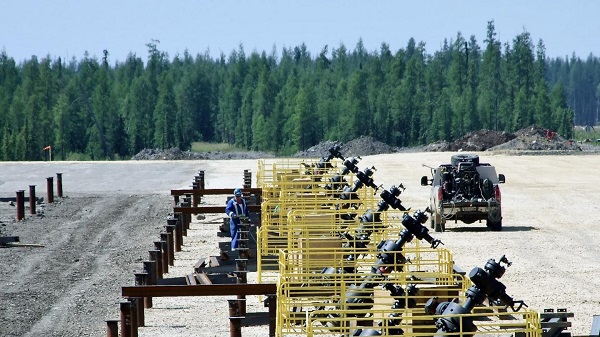
 Alberta3 hours ago
Alberta3 hours agoBusting five myths about the Alberta oil sands
-
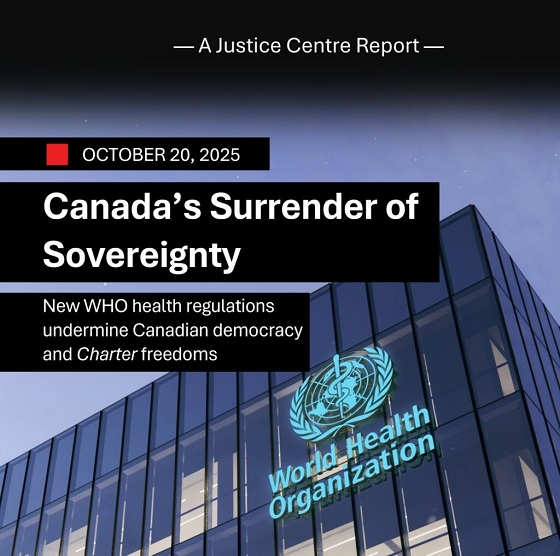
 Health6 hours ago
Health6 hours agoNew report warns WHO health rules erode Canada’s democracy and Charter rights
-

 Energy5 hours ago
Energy5 hours agoMinus Forty and the Myth of Easy Energy
-
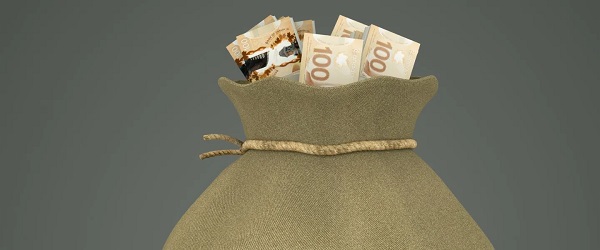
 Fraser Institute4 hours ago
Fraser Institute4 hours agoMétis will now get piece of ever-expanding payout pie
-

 Bruce Dowbiggin2 days ago
Bruce Dowbiggin2 days agoWhile America Shrugs Off Woke, Canada Doubles Down On Feminizing Society
-
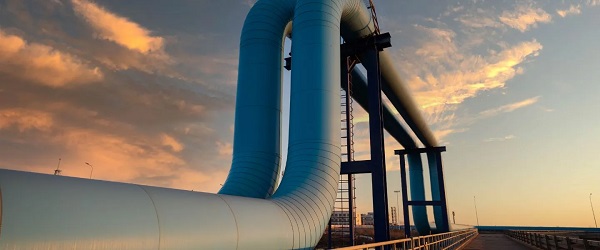
 Energy2 days ago
Energy2 days agoNational media energy attacks: Bureau chiefs or three major Canadian newspapers woefully misinformed about pipelines
-

 COVID-192 days ago
COVID-192 days agoCanadian veteran challenges conviction for guarding War Memorial during Freedom Convoy
-

 DEI1 day ago
DEI1 day agoConservative push to end Canada’s ‘anti-merit’ DEI programs receives support





